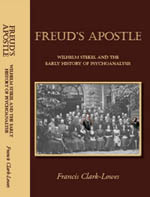I found a room in a commune in the Schönbrunnerstrasse and this became my home for my eleven weeks in Vienna. Among my fellow ‘communists’ I remember Greek Dmitri, forty-year-old Iranian Reza, eighteen-year-old Austrian Eva, and Polish Bogdan.
I attended a German course at the university and, to earn a bit of money, I delivered leaflets for a man whose name meant ‘ joker’. Later, through another Eva, whom I’d met at the Foyer in Paris, I got a menial job with a small publishing house right next door to the Sigmund Freud Museum. Curiously twenty years later I was to live above this museum researching the history of psychoanalysis.
Fabri, my new boss, was eventually arrested for forging tram tickets! But before we parted company, I met there twenty-year-old Angie (Annemarie), a qualified photographer, who had worked long hours in the darkroom, before Fabri fired her to reduce his wages bill. This petite pretty girl returned to collect her back-pay, and her friend, Vicki, introduced me to her as ‘a crazy Englishman who’s walking to Jerusalem’. Vickie invited us both to drink punch that evening, and later we went to a Heurigen (a bar selling new wine) on the outskirts of Vienna.
Well, one thing led to another, and some time later Angie announced that she would be accompanying me on my walk to the east! So one September morning we set off from the Stefansdom and made our way out to the wide and far-from-blue Danube at the point where the collapsed Reichsbrücke had blocked the river. A few weeks before this busy bridge, with tramlines, the only one the Soviet army managed to take intact in 1945, had fallen into the river in the early hours, taking one solitary motorist with it. Only a couple of hours earlier we had crossed it in a friend’s car. I heard the news on the BBC World Service the next morning!
For a couple of days we followed the Danube to the Iron Curtain with its control towers and high electrified barbed-wire fence, passing Josef Haydn’s house in Hainburg on the way. To our surprise we were allowed to walk across no-man’s land, but we stopped dead in our tracks when a voice boomed down at us from a machine-gun turret: ‘Haf you dirty makazines?’
From Bratislava we took a train off-route to Prague, where we spent a couple of days exploring the then rather drab Czechoslovak capital. After a night train back to Bratislava, we set off eastwards again, stayed a couple of nights in Slovakia, one of them with a poor Hungarian-speaking man, and then crossed the Danube into Hungary itself at Komarom. It was raining by then, and soon it was pouring. Angie, who hadn’t quite reckoned on such an arduous trek, suddenly threw her rucksack on the ground and said she wasn’t going any further. I was determined not to give up. Fortunately just at this critical moment a bus came along going to Tatabanya, so she got on and we met up a couple of hours later for the night in this Esterhazy town.
We followed a similar routine for the rest of our walk together. Angie would accompany me part of the day and then take public transport or a lift to our destination, where she would arrange accommodation. I liked this arrangement which allowed me to walk at my own pace for part of the day, while Angie took my heavy rucksack. But it had its risky side for her. One evening I arrived just in time to rescue her from a crowd of rather pushy young men. Nevertheless, Hungary, with its beautiful capital, Budapest, its endless rows of drying paprika along the eaves of houses and its generally very friendly people, was delightful, and we were sorry to cross the border into Yugoslavia.
By now Angie was suffering from a bad foot, and in Sombor, a town in the Voivodina province of Serbia, we agreed that she should return to Vienna. I travelled with her by train to Zagreb and saw her off from there. We promised each other we’d meet in Jerusalem, but we both knew it might not happen.

